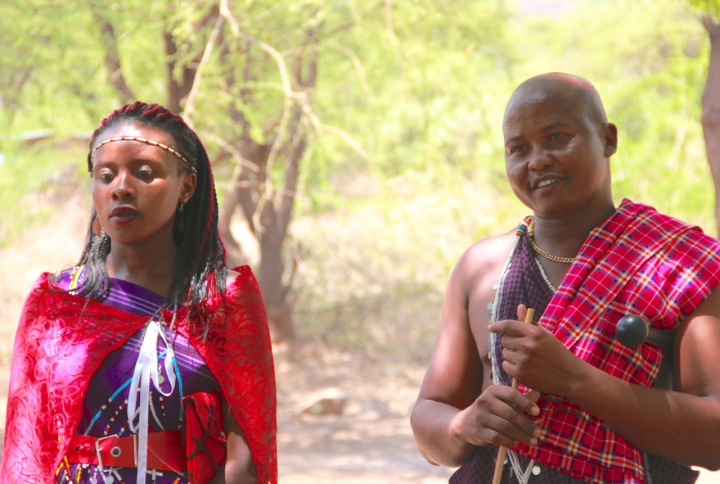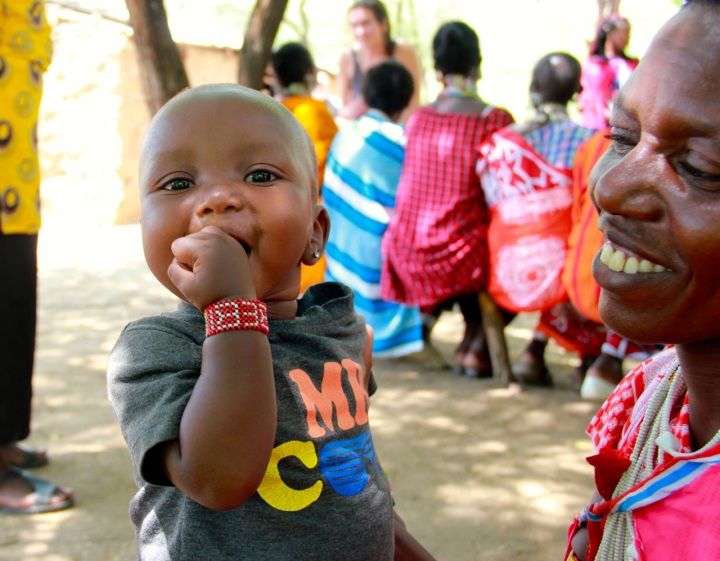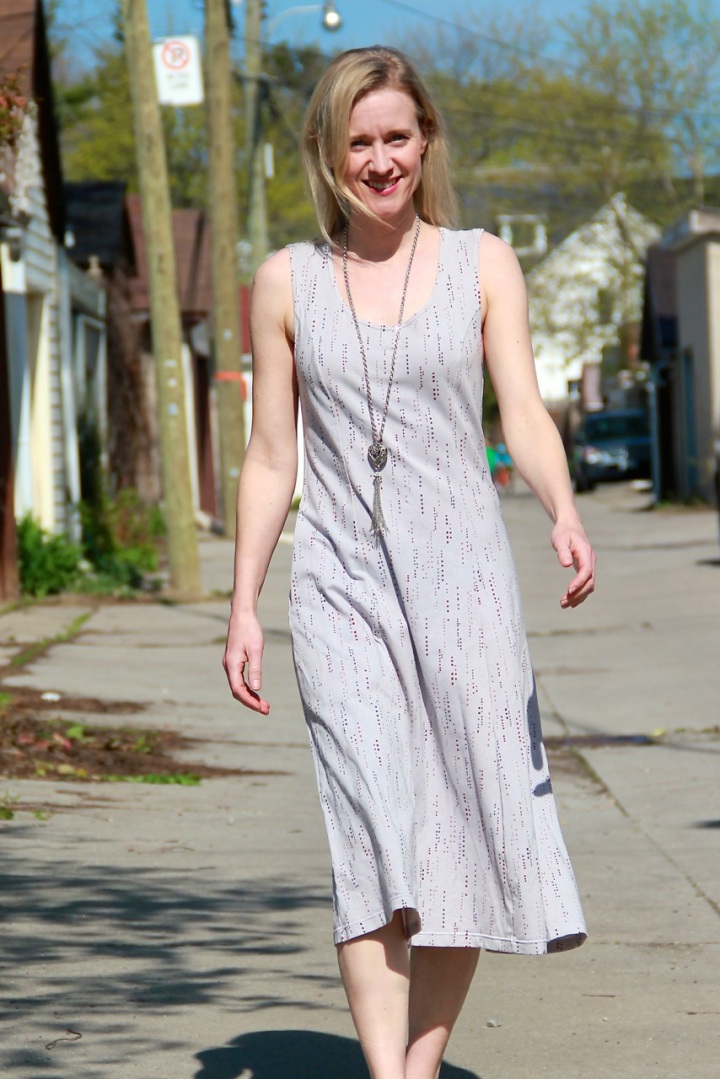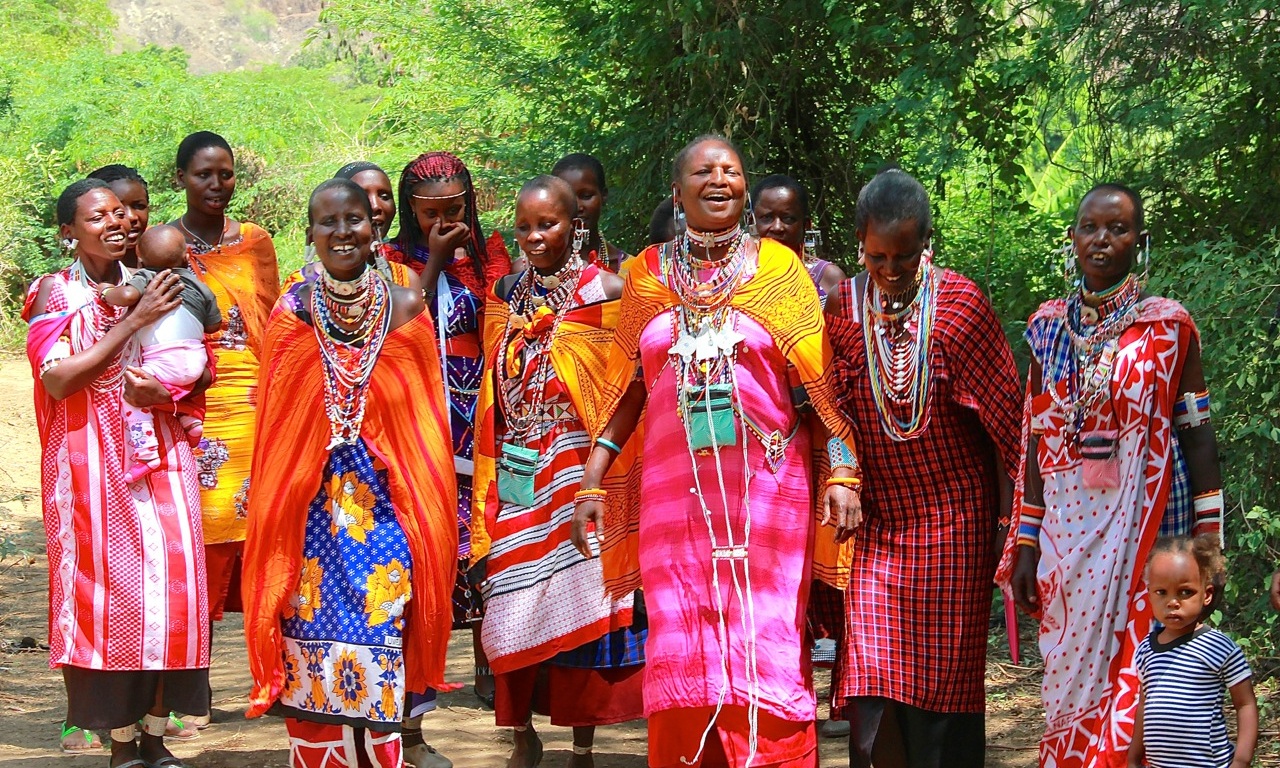Cast your eye upon these glorious colours worn by a group of Maasai women I met in Kenya recently! I travelled there with a group of my university students to learn more about the cultural tradition of Female Genital Mutilation (FGM; also sometimes referred to as Female Genital Cutting or FGC), and to meet young residents of a slum in the capital city Nairobi. What an experience!

One of our goals on this trip, in partnership with AMREF Canada (African Medical Research and Education Foundation), was to shoot a short documentary about AMREF’s efforts to help phase out Female Genital Mutilation in rural Kenyan communities. My students are studying media production, so this was an opportunity for them to put the professional skills they’re learning into practice while finding out about international development issues and immersing themselves in a different culture. And guess what? There’s even a sewing angle to all of this, so stay tuned! And guess what else? I’m going to ask you to make a donation to a great cause if you can, so be warned!
If you haven’t heard of FGM before, it’s a long-standing tradition in certain communities of ‘circumcising’ a girl to mark her passage from girlhood to womanhood. FGM involves partial or total removal of the external genitalia (the clitoris and labia). While the practice is technically illegal in Kenya, it is such a deep-rooted tradition in some communities that many families consider a girl to be unclean and unfit for marriage if she has not been cut. There is a belief that uncut women cannot be thought of as real women, and that they are likely to be unfaithful in their marriage. FGM, particularly in rural areas, is performed without anaesthetic in unsanitary conditions, sometimes even using cow dung to staunch the bleeding. The procedure causes excruciating pain, and girls can die of loss of blood or infection. We spoke with several girls and women who knew someone who died because of the procedure. They described to us in vivid detail how village men are needed to hold ropes attached to the girls’ legs and arms to keep them completely immobile and unable to run away during the procedure. FGM can also cause sexual dysfunction, complications in childbirth, and greatly increases a woman’s risk of HIV infection. It is generally carried out on adolescent girls as young as 8 years old. Once a girl is cut, she is considered ready for marriage and usually must also stop attending school. For obvious reasons, FGM is considered to be a violation of human rights.
That’s a lot to process — I know. A real-life horror show.
The United Nations Population Fund has an FAQ about Female Genital Mutilation here.
So on to the good news: AMREF is working hard to implement “Alternative Rites of Passage” (ARP), whereby the girls still go through a ceremony to mark their passage to womanhood, but without being cut. In order for this to happen, AMREF must ensure everyone including the village chiefs (men) and the young men who would marry the young women understand the risks and outcomes and agree to stop the practice. AMREF does this through education, as well as providing training to the elder women who normally earn a living performing circumcisions. These women are retrained to become traditional birth attendants, so they can continue to earn a living but also contribute to healthy outcomes for girls and women. In place of the cut, the girls attend two or three days of sexual and reproductive health education as well as instruction on why they should stay in school and pursue an education.
Over 10 thousand girls in Africa have been through AMREF’s ARP program…that means over 10 thousand girls who have not had to endure the cut. Bravo, AMREF!

Above is Beverly (18 years old) and her uncle Lelein. Beverly was expected by her parents to undergo FGM, but when the time came, she ran away. Girls who refuse FGM or run away can be beaten and/or ostracized from their family and community. Luckily for Beverly, her uncle Lelein was sympathetic and took her in. She is still estranged from her father who believes she must be cut. But Beverly has now finished high school and hopes to be able to attend university to study law. We sat in on a talk she gave to a class of high school girls to encourage them to believe in themselves and finish their education. She is quite an inspiration.

That’s me with some women from a village called Oldonyonyoki. The woman in the centre used to perform the circumcisions, but these women and their village elders have embraced AMREF’s Alternative Rites of Passage so their girls will no longer be forced to endure FGM. And look at that amazing traditional Maasai beadwork the women have created. (Oh, and since you’re normally here to read about sewing and DIY, I’m wearing a dress I decided I HAD to make a couple of days before the trip using McCall’s 5890. Why do I put myself through that stress just before a big trip? Do you do that, too?)




Would you support AMREF’s amazing work in helping to eradicate Female Genital Mutilation? Please visit my donor page to make a donation to AMREF. I wouldn’t ask you if I hadn’t seen for myself how effective AMREF has been at tackling this massive issue…not only are they saving girls from FGM but so many more girls are staying in school, which makes them better able to care for their families and better contributors to their society. The Alternative Rites of Passage program is making a real, tangible difference not only in the lives of these girls but also for their entire communities. What a great cause. I’ve seen how the sewing community can rally around a great cause before and I’m hoping I can fire us up for this one. 🙂

At the risk of being frivolous (a-hem) after all that, here’s a better look at the dress I made from McCall’s 5890, View E, using a cotton jersey knit I had in my stash. We were told before our trip that we’d need to dress somewhat conservatively , so no mini skirts or shorts. This midi-length dress isn’t what I’d choose to wear normally, but it was the right amount of cover and loose enough to be perfect in the Kenyan heat.


I have so much more to share with you, including our time spent at AMREF’s drop-in centre for street kids in the Dagoretti slum of Nairobi — where kids can learn, among other things, how to SEW! — plus pics from our weekend safari. That’s coming up in another post soon!
Thanks so much for reading. And please do consider making a donation to support AMREF if you can.



Thank you for this post about something that affects so many vulnerable young girls.
LikeLiked by 1 person
Amazing Lori! Thanks for sharing this. 🙂 So sad.. but also inspiring to see this prevention work being done to save so many girls and give voice to this issue! Such a trooper. The dress is flattering and fabulous as well! 🙂 Welcome back
LikeLiked by 1 person
Glad to see people involved in such a great cause.
LikeLiked by 1 person